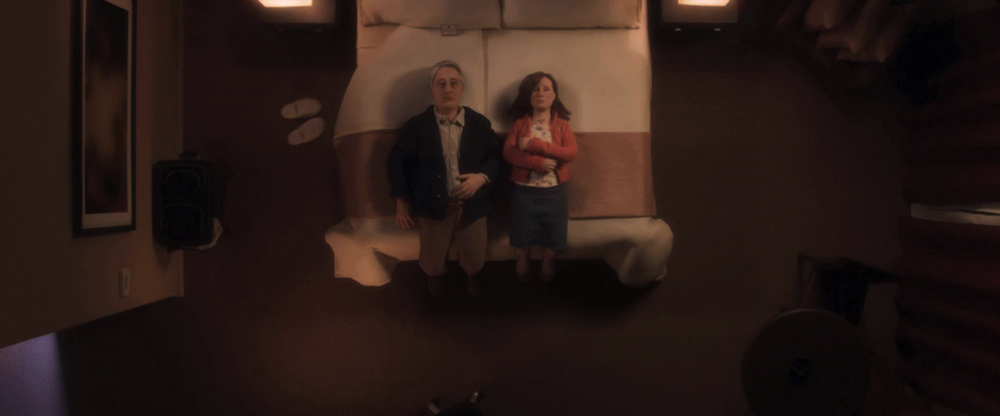
By Darissa Townes, contributor
On Thursday, Jan. 14, Atlanta’s Midtown Art Cinema started showing “Anomalisa,” Charlie Kaufman’s latest film, which was recently nominated for the Oscar for Best Animated Film. Similar to Kaufman’s other works he has written such as “Eternal Sunshine of the Spotless Mind” and “Synecdoche, New York,” “Anomalisa” features psychological themes and imagery that take the audience on a dramatic rollercoaster ride about a man and his inner conflict with loneliness.
The story follows a British self-help author from Los Angeles named Michael Stone (voiced by David Thewlis) who arrives in Cincinnati to give a speech. Unfortunately, he has been dealing with a serious psychological episode. Everybody around him appears to have the exact same face and voice, from his cab driver, to the hotel manager, to even his wife and young son. Just when all hope for sanity seems lost to Michael, he’s startled by a distinctly female voice coming from down the hall in his hotel. He tracks down the voice and finds Lisa (voiced by Jennifer Jason Leigh), a fan of his book in town for his speech. Unlike all the other people Michael has encountered, Lisa has her own face. Michael is immediately enamored by her mere existence and a relationship is formed between them in the course of a night. The main focus of the film is Lisa’s existence, described as an anomaly or “anomalisa,” a combination of “anomaly” and Lisa’s name. After an undisclosed amount of time of Michael constantly hearing and seeing the same things, she appears in his life and he begins to fear losing her.

Besides the story, another spectacular thing about “Anomalisa” is the fact that the whole movie was shot in stop-motion. Using 3D-printed puppets, each movement of the characters were painstakingly put together and shot to make this film and the results give the most realistic motions I’ve ever seen in an animated film. For example, in the scene where Michael first calls his ex-girlfriend, he taps his fingers against his thigh as the phone rings, a kind of fidgeting that many real-life people would do when making a phone call. This attention to detail feels genuine and it really shows how much the artists studied human movement. The pacing is also executed in real time, with virtually no transitions to suggest a large passage of time.
Overall, “Anomalisa” is a wonderfully bittersweet film about a man’s downward spiral and a woman’s chance to feel more confident about herself. The connection you make with the characters and their struggles is unbelievable. You really feel like Michael achieves a moment of clarity when he is able to hear a different voice and understand his anxiety over possibly losing it. While the film’s ending may leave more to be desired, this was a film that wasn’t meant to have a fulfilling ending, but a film that peeked into the lives of two lonely people and the bond that they created.




















